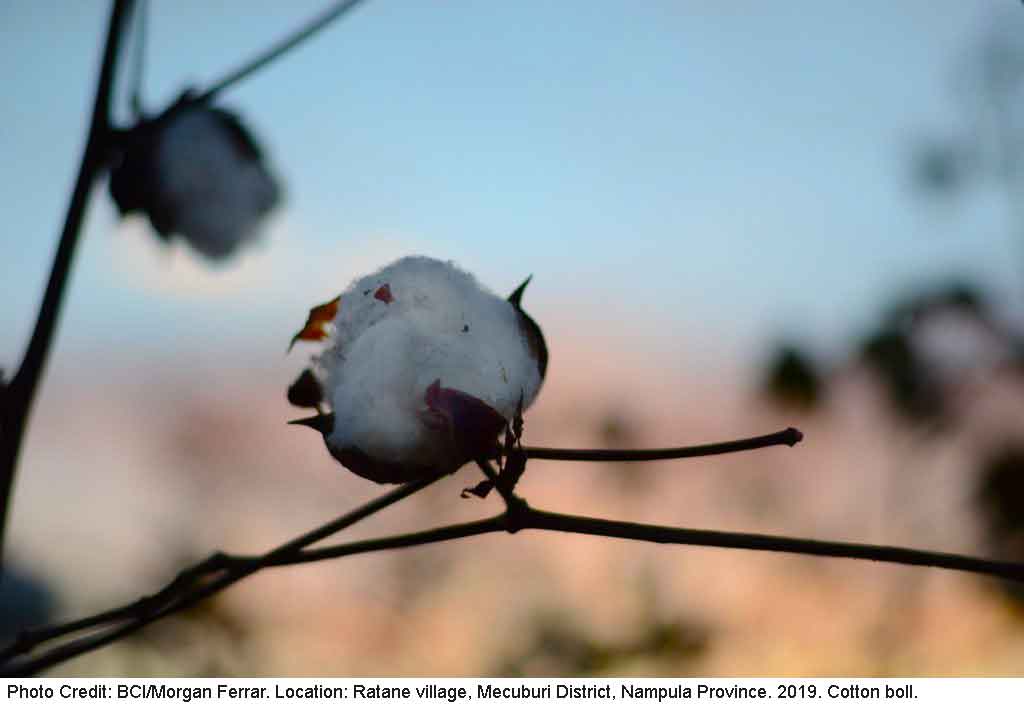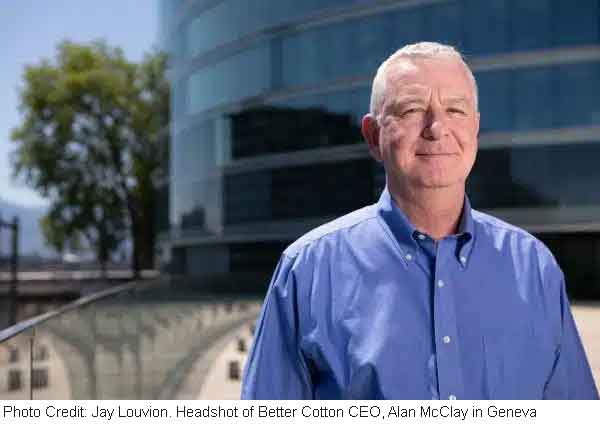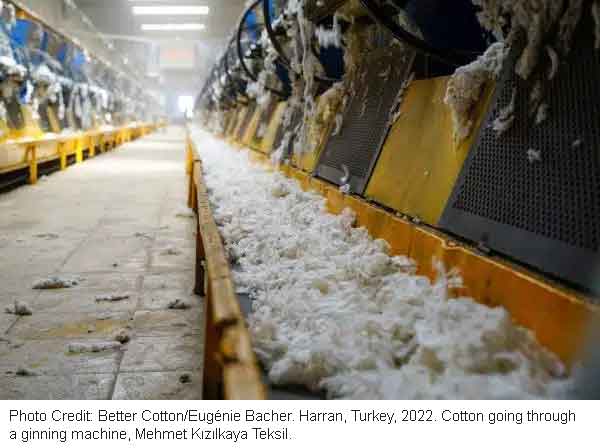
Category: General
Country: Switzerland
By Alan McClay
CEO Better Cotton.
30 March 2023.
Better Cotton made significant strides in 2022 towards our vision of a world where more sustainable cotton is the norm. From the unveiling of our new and improved reporting model to a record 410 new members joining in one year, we prioritised on-the-ground change and data-driven solutions. The development of our traceability system entered a new phase with the stage set for pilots to commence, and we secured funding of over 1 million EUR to continue our work for traceable Better Cotton.
 We have continued this momentum into 2023, kicking the year off with our Programme Partner Meeting in Phuket, Thailand under the twin themes of climate change and smallholder livelihoods. Our commitment to knowledge sharing continued as we collaborated with ABRAPA, the Brazilian Association of Cotton Producers, to organise an Integrated Pest Management workshop in Brazil in February, with the aim of sharing research and innovative initiatives regarding the control of pests and diseases in the cotton crop. We are committed to supporting all efforts to reduce pesticide use.
We have continued this momentum into 2023, kicking the year off with our Programme Partner Meeting in Phuket, Thailand under the twin themes of climate change and smallholder livelihoods. Our commitment to knowledge sharing continued as we collaborated with ABRAPA, the Brazilian Association of Cotton Producers, to organise an Integrated Pest Management workshop in Brazil in February, with the aim of sharing research and innovative initiatives regarding the control of pests and diseases in the cotton crop. We are committed to supporting all efforts to reduce pesticide use.
As we approach the end of the first quarter of 2023, we’ve been taking stock of the current sustainability landscape and mapping out how we can best use our resources and expertise at Better Cotton to address the challenges and opportunities on the horizon.
Welcoming a new wave of industry regulation and introducing Better Cotton traceability
2023 is an important year for sustainability as a growing set of regulations and legislation are being implemented around the world. From the EU Strategy for Sustainable and Circular Textiles to the European Commission’s initiative on substantiating green claims, consumers and lawmakers have wised up to ambiguous sustainability claims like ‘zero emissions’ or ‘eco-friendly’ and are taking steps to make sure claims are verified. At Better Cotton, we welcome any legislation that supports a green and just transition and recognises all progress on impact including at field level.
 In late-2023, following our supply chain mapping efforts, we will begin to roll out Better Cotton’s global traceability system. The system includes three new Chain of Custody models to physically track Better Cotton, an enhanced digital platform to record these movements, and a new claims framework which will give members access to a new Better Cotton ‘content mark’ for their products.
In late-2023, following our supply chain mapping efforts, we will begin to roll out Better Cotton’s global traceability system. The system includes three new Chain of Custody models to physically track Better Cotton, an enhanced digital platform to record these movements, and a new claims framework which will give members access to a new Better Cotton ‘content mark’ for their products.
Our commitment to traceability will ensure Better Cotton Farmers, and particularly smallholders, can continue to access increasingly regulated markets, and we will drive significant growth in the volume of traceable Better Cotton. Over the coming years, we plan to create additional benefits for Better Cotton Farmers including local investment by providing direct connections with retailers, brands, and customers.
Optimising our approach and launching the remaining Better Cotton Impact Targets
In line with growing calls for evidence on sustainability claims, the European Commission has also issued new rules on corporate sustainability reporting. Most notably, the Corporate Sustainability Reporting Directive came into force on 5 January 2023. This new directive introduces stronger reporting rules for companies operating in the EU and pushes for greater standardisation in reporting methodologies.
After more than 18 months of work, we announced a new and improved approach to our external reporting model at the end of 2022. This new model tracks progress over a multi-year timeframe and integrates new farm performance indicators aligned with the Delta Framework. In 2023, we will continue to share updates on this new approach in our Data & Impact blog series.
During the first half of 2023, we will also be launching the remaining four Impact Targets connected to our 2030 Strategy, focused onpesticide use (as mentioned above), women’s empowerment, soil health and smallholder livelihoods. These four new Impact Targets join our climate change mitigation target to complete our plan to make cotton better for the farmers who produce it and for all those who have a stake in the future of the sector, as well as for the environment. These progressive new metrics will allow better measurement and drive change across five key areas to ensure greater lasting economic, environmental and social benefits at the farm level for cotton-growing communities.
Unveiling our new Better Cotton Principles and Criteria
For the last two years, we have been revising the Better Cotton Principles and Criteria, which lay out the global definition of Better Cotton. As part of this revision, we are going further to integrate key components of regenerative agriculture, including core regenerative practices such as maximising crop diversity and soil cover while minimising soil disturbance, as well as adding a new principle on improving livelihoods.
We are nearing the end of our review process; on 7 February 2023, the draft P&C v.3.0 was officially approved for adoption by the Better Cotton Council. The new and improved Principles and Criteria are expected to be launched in the first half of 2023, followed by a transition year, and will come into full effect in the 2024-25 cotton season.
See you at the 2023 Better Cotton Conference
Last but not least, in 2023 we are looking forward to once again convening industry stakeholders at the 2023 Better Cotton Conference. This year’s conference will take place in Amsterdam (and virtually) on 21 and 22 June, exploring the most salient issues and opportunities in sustainable cotton production, building on some of the topics which we’ve discussed above. We are excited to gather our community and welcome as many of our stakeholders as possible at the conference. We hope to see you there.
Courtesy: General newsfeed from Better Cotton blog, 30th March 2023.
Copyrights © 2025 GLOBAL TEXTILE SOURCE. All rights reserved.